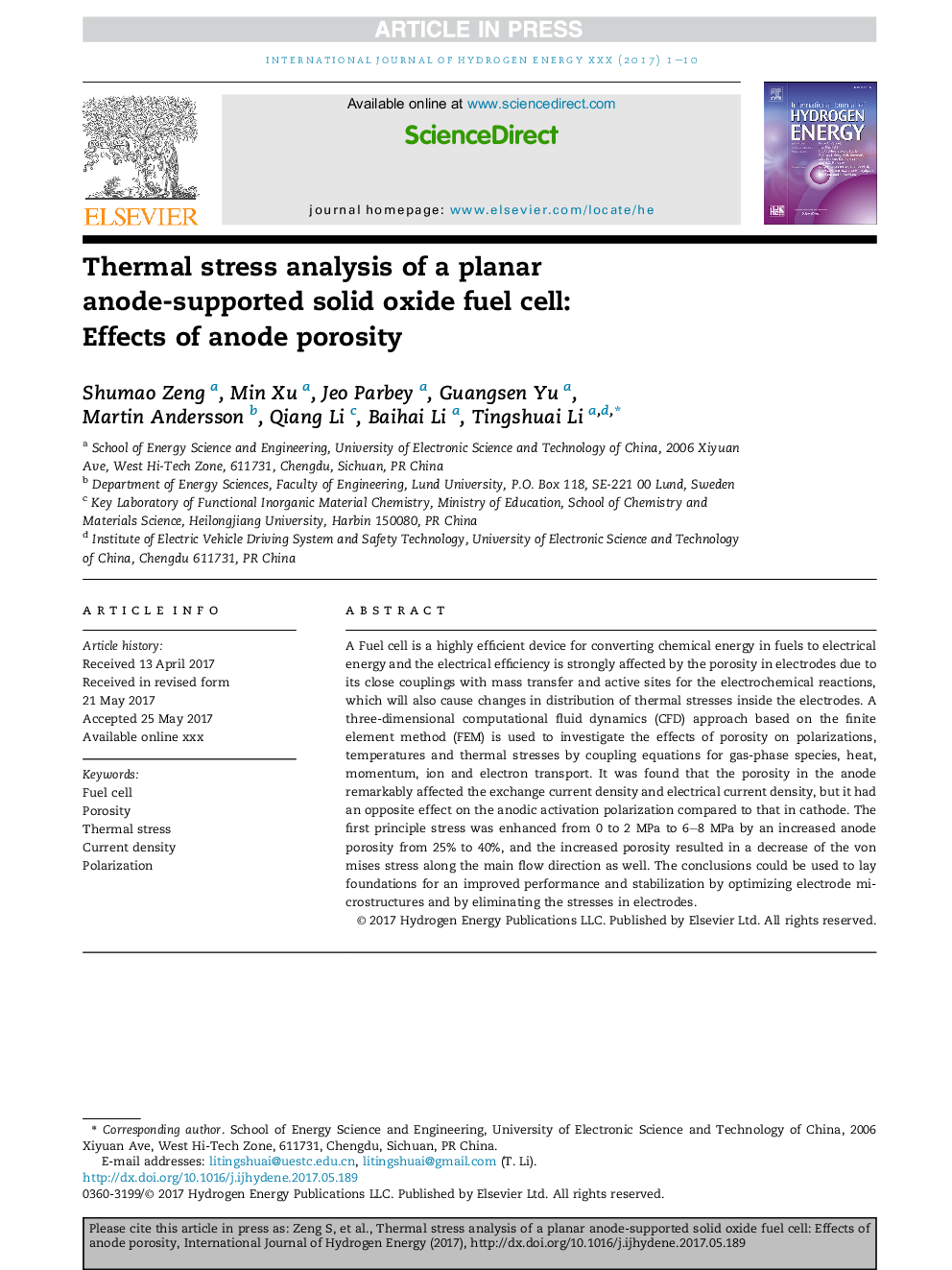| Article ID | Journal | Published Year | Pages | File Type |
|---|---|---|---|---|
| 5146661 | International Journal of Hydrogen Energy | 2017 | 10 Pages |
Abstract
A Fuel cell is a highly efficient device for converting chemical energy in fuels to electrical energy and the electrical efficiency is strongly affected by the porosity in electrodes due to its close couplings with mass transfer and active sites for the electrochemical reactions, which will also cause changes in distribution of thermal stresses inside the electrodes. A three-dimensional computational fluid dynamics (CFD) approach based on the finite element method (FEM) is used to investigate the effects of porosity on polarizations, temperatures and thermal stresses by coupling equations for gas-phase species, heat, momentum, ion and electron transport. It was found that the porosity in the anode remarkably affected the exchange current density and electrical current density, but it had an opposite effect on the anodic activation polarization compared to that in cathode. The first principle stress was enhanced from 0 to 2Â MPa to 6-8Â MPa by an increased anode porosity from 25% to 40%, and the increased porosity resulted in a decrease of the von mises stress along the main flow direction as well. The conclusions could be used to lay foundations for an improved performance and stabilization by optimizing electrode microstructures and by eliminating the stresses in electrodes.
Related Topics
Physical Sciences and Engineering
Chemistry
Electrochemistry
Authors
Shumao Zeng, Min Xu, Jeo Parbey, Guangsen Yu, Martin Andersson, Qiang Li, Baihai Li, Tingshuai Li,
